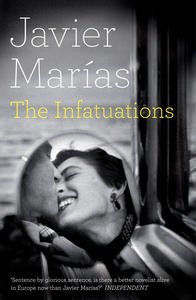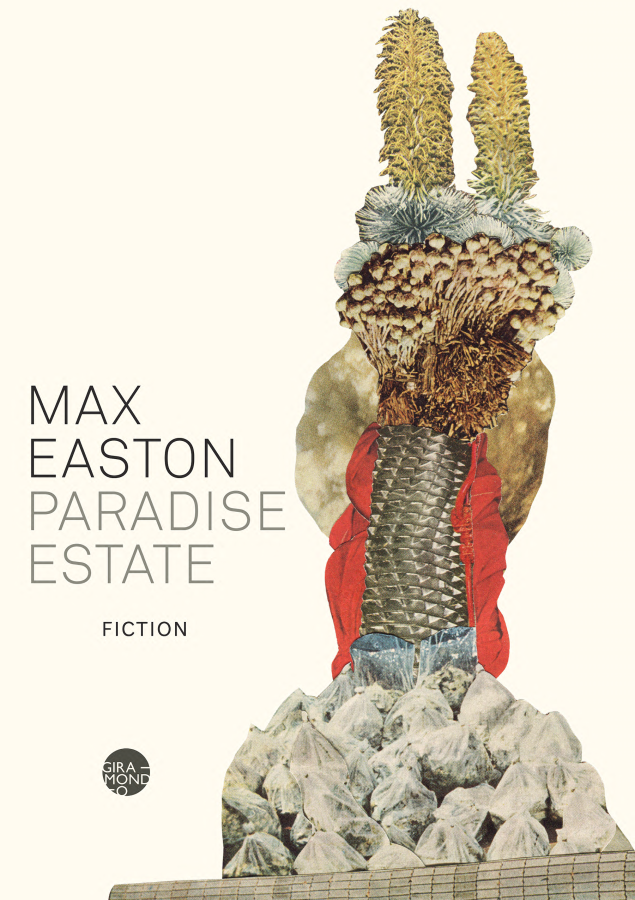To be honest, I had lost track of Javier Marías long before I received the commission to write a review of The Infatuations, his latest novel – apparently a murder mystery. In my ingenuous youth, I had been rather impressed, when not mesmerised, by the style, the themes and the exquisite craftsmanship displayed in novels such as All Souls (1989) and A Heart So White (1992). Years had passed, however, and my interest, always capricious, had waned. Javier Marías became yet another ubiquitous name in literary magazines. All innocence gone, I am now a researcher and part-time critic, a literary mercenary if you like, a word detective – hit-man would be too extravagant. As such, I took on The Infatuations case as I would have taken on any other: professionally and dispassionately. Therefore, in preparation for the job, and while awaiting the principal piece of evidence to arrive in the mail – id est, a copy of the book – I made some enquiries, before proceeding to the customary investigation.
Javier Marías, King of Redonda – a minuscule uninhabited piece of rock in the Caribbean, the monarchy of which is passed down through a line of writers – is a fine, mature and impeccably dressed gentleman. He abhors the internet, lives in Madrid, writes on a typewriter (albeit electronic) and smokes incessantly. He is also the son of a renowned politically committed philosopher, Julián Marías, the nephew of an illustrious politically irreverent pornographer, Jesús Franco (nothing to do with Francisco, the dictator who shares his surname), and a member of the Spanish Royal Academy. He has lectured at Oxford University and has translated into Spanish a bunch of big names, among them Salinger, Conrad, Nabokov, Stevenson, Faulkner, Sterne and Shakespeare. Last but not least, Marías is the bestselling author of twelve novels – and when I say bestselling I mean millions of copies in more than forty languages. These novels have turned him into a safe bet for the Nobel Prize for literature, according to my informers.
Initial research into The Infatuations proved surprising. Fifty-seven critics had agreed that the novel was the best of the year in Spain in a survey conducted by the literary supplement of El País, the most important left-wing national newspaper in the country. The surprise turned into mystery when I discovered that a similar number of critics had voted the book one of the ten best literary works of the new century in the literary pages of ABC, the most important right-wing national newspaper in Spain. Anyone familiar with the idiosyncrasies of Spanish politics will know that agreement between both sides of the political spectrum is a rarity, only confined to the national soccer team, and only during the World Cup (provided they are winning), and to gastronomy – unless, of course, you are suspicious of vegetarianism. I must admit that the mysterious unanimity about a novel written by a politically opinionated Spanish author left me nonplussed and filled me with a certain degree of excitement.
This excitement was further nourished by a quick examination of international reviews. Critiques ranged from heart-felt appraisal to ecstatic rapture. Michael Eaude from the Independent praised the book’s fine prose, its rhythm and its unrestrained wisdom. Lee Langley celebrated Marías’s ‘metaphysical exploration masquerading as a murder mystery’, and his ‘immaculate prose and his sardonic view of the implacable nature of time’ for the Spectator. A popular literary blog, Bait for Bookworms, revered ‘The Best Book Dostoevsky Didn’t Write’. Robert McCrum acclaimed the novel in the Guardian as a ‘haunting murder mystery, embracing all the big questions about life, love and death … an instant Spanish classic’; ‘the full text of Don Quixote was first published as long ago as 1620,’ he noted, adding ‘I wouldn’t be surprised if The Infatuations soon acquired an equally devoted following.’
Well, I might have lost my reading innocence, but this novel had to be the one to bring me back to Marías. My youthful enthusiasm was rekindled. While I eagerly waited for the masterpiece, I mused on some delightful passages from A Heart So White and wondered whether my distance from the author had been an unforgivable act or a reckless whim.
An ominous autumnal morning, the book finally arrived. There it was. The Infatuations. 352 pages to quench my thirst. On the front cover, a happy couple’s kiss is reflected on a car’s round mirror: a black and white photograph by Elliott Erwin. On both covers, a few lines worth quoting – after all, who would print a lie on a book’s jacket? ‘Stylish, cerebral … Marías is a startling talent’ (New York Times); ‘Sentence by glorious sentence, is there a better novelist alive in Europe now than Javier Marías?’ (Independent). With this independent question echoing in my mind, I made myself a cup of coffee, lit a cigarette (I know, but it’s a murder mystery, I needed to establish the atmosphere) and started reading. It took me less than five pages to walk to the kitchen and start making a pot of coffee. No more questions echoing in my mind. Just a fact: I was going to need quite a bit of caffeine to finish this job.
So what happens in The Infatuations? The narrative tells the story of María Dolz, a publisher’s editor, who takes some infatuated voyeuristic comfort in observing a glamorous, seemingly ‘perfect couple’ every day in the cafe where she takes breakfast on her way to the office. María’s morning solace and pleasure is ‘seeing how much they enjoyed each other’s company’. Then, one day, they disappear, and María feels disconcerted without them. Later, she discovers that a beggar has savagely stabbed the husband to death on a quiet Madrid street.
María begins to investigate the facts of the couple’s story in a rather obsessive manner. Her inquiries reveal that the incident was far from a disgraceful random attack. Rather, several possibilities are open, from accident to homicide. María, who is also the narrator, becomes an unwitting accomplice of the crime. The enlightenment process is matched by a chain of (perhaps) not-so-fatal infatuations involving María, Luisa – the victim’s widow – and Javier, the couple’s best friend. The narrative is confined to half-a-dozen characters and, although the novel kicks off with an act of savage brutality, most of it ponders vital metaphysical questions relating to the moment of death, the nature of mourning, the fluency of love, time, memory, fidelity, friendship, and so on. It also offers a meditation on literature (Balzac, Dumas and Shakespeare are constant references), a critique of the absurdity of the literature business, and a savage metaphorical stabbing of Professor Francisco Rico, María’s colleague in the Spanish Royal Academy, who is, apparently, the epitome of academic arrogance and futile erudition.
Now, if the story is supposed to be a murder mystery, the solution to the mystery of its success might be found in the story. What we demand from a crime novel is a crime that feels plausible (no matter how outrageous), a detective (no matter how improbable), and a resolution (preferably at the end, and with a climax). Our reading must be accompanied by mounting tension, a sense of sinister danger, before the final revelation and denouement.
Well, The Infatuations presents a crime that put to the test my capacity for suspension of disbelief. It turns the detective into a weak character, unable to take any action and incapable of focusing on a resolution. Moreover, the novel introduces an obvious denouement midway through the narrative, then spends the remaining one hundred and fifty pages explaining it. In the process, any possible tension, suspense or sense of surprise is washed away in a tide of stretched out metaphysical digressions and protracted rhetorical questions. Therefore, I had to admit to myself that Marías’ novel is not a real murder mystery, nor is it any identifiable type of crime novel. It is not a whodunit, nor a detective fiction, and certainly not a work of hard-boiled fiction. Regardless of genre classifications, it was obvious at this point that the solution to the mystery of the success of Marías’s novel could, by no means, be found in the story.
If it wasn’t the story, then, would it be the themes? The author has acknowledged his obsession with certain eternal themes, which recur in his novels: ‘treason, secrecy, the impossibility of knowing things, or people, or yourself, for sure. There is also persuasion, marriage and love.’ As McCrum claims, the novel could be interpreted as a metaphysical murder fiction ‘embracing all the big questions about life, love and death’. These are fleshed out in abundant musings on all sides about love, the moment of death, time, memory, the fragility of the ‘normal’, friendship, betrayal, the impossibility of communication or truth or knowing, desire, the role of narration in life, and a cohort of minor etceteras.
Is María, then, the detective-narrator who observes the scene without necessarily understanding everything, yet questions everything as a kind of post-Proustian practical philosopher? Is The Infatuations a masterful metaphysical exploration masquerading as a murder mystery? The answer is no. It is true that the narrator’s monologues, dialogues and near-soliloquies meander, circumnavigate and touch upon themes that have interested mankind since the beginning of history. In fact, the vast majority of the novel is devoted to the perusal of such topics. In section after section (in a didactic manner, some would say), the narration leaves no transcendental enquiry untouched, not even shying away from redundancy and multiple repetition and sometimes literal repetition.
At the end of the reading we can, as a result, discern a few key enlightening conclusions. Love is whimsical and may or may not last forever. You can never know the truth about people completely, despite social and technological advances, even despite the internet. Dying must be really daunting. Life and things are pretty chaotic. Contemporary writers are imbeciles. Time passes.
If these deductions sound to the reader’s post-postmodern ear somewhat like a hair parlour philosophy (with all due respect to hair parlours, I could have chosen Oprah Winfrey’s philosophy or English Department philosophy to express the same notion), the reader will probably be right. Marías’s disquisitions are not only tedious and pedestrian, but also built upon commonplaces and clichéd contemporary commoditised ‘commonsense’. Furthermore, the same topics have been at the core of his novels for the past forty years. Maybe the reiteration and the shallowness are due to lack of planning? Marías himself has admitted that ‘I’ve never had a literary project and feel I have been improvising all my career’. Whatever the case, my investigation at this point was getting cold, in the absence of any fresh leads to explain the enigma of the critics’ celebratory acquiescence. A third field, however, might offer a resolution to the conundrum. If it was neither story nor themes, it had to be style. And Marías, I knew, was damn good at that.
Marías has been dubbed ‘el mejor escritor inglés en lengua española’ – the best English writer in Spanish – doubtlessly referring to the English-like quality of his prose. Eaude describes his style as ‘long and flowery, with sub-clauses hanging off sub-clause like chains of tropical flowers’. This style, apparently, legitimises sparse action and is the perfect vehicle for Marías’s lengthy philosophical diversions. Critics have repeatedly invoked Proust and Woolf when describing his immaculate prose. But reading The Infatuations one thing becomes apparent: Marías is no Proust. Our author has often quoted Sterne’s ‘I progress as I digress’ to describe his writing technique. In this novel, the formula seems to work better as ‘I digress as I progress’. And the progression is rather awkward. Structural repetition after structural repetition, clichéd adjective after clichéd adjective, elongated sentence after elongated sentence: the style that in earlier novels may have crafted ‘chains of tropical flowers’ becomes, in The Infatuations, self-indulgent verbosity. You need to have a good excuse and a spotless technique to back up a fourteen-line sentence in English. Sadly, Marías seems to lack both in this book.
By this stage, I was running out of ideas. In a desperate last attempt, I tried character and voice. After all, I said to myself, some novels, some authors’ oeuvres even, had been constructed upon voice solely. Maybe this was the case? When I started the investigation of voice, however, I soon reached yet another dead-end. The starting point seemed to offer some hope, as Marías had set himself the challenge of using, for the first time in his career, a female narrator. María (yes, her name is María and her lover’s name is Javier) is omnipresent throughout the novel – so omnipresent that her voice smothers the voices of the other characters. In tone and style, María sounds, regrettably, not only akin to the male characters in the book, but like any other male character in Marías’s previous productions. María sounds like Marías. It is only when she lucubrates about desire (curiously enough, as the object of male desire, since her own is expressed in a rather prudish manner) that she has some slightly convincing female undertones. Taking into account that the main adventure in the novel is a mental one, it is rather unsatisfactory to encounter a series of characters whose psychology is blurred due to monotony of expression. Marías’s narrators are always essential to his fiction, and most have strong hypnotic voices. In The Infatuations, the voice – since there seems to be just one, regardless of whether you are male or female, thug or writer – is a tedious echo of past novels.
At this stage, I gave up. The mystery of The Infatuations’s success would remain unsolved. I could cling to some treasures; I could still appreciate some fortunate descriptions, such as the initial depiction of the married couple’s blissful love. I could still enjoy some humorous passages, such as the thug’s reaction to María’s semi-nudity, or the merciless portraits of Professor Rico and some ‘imagined’ authors. I could even savour some quotable sentences tackling the mysteries of life. Yet I could not explain the mystery of the novel. Maybe I was wrong. Maybe I held some subconscious grudge against an innocent author. Maybe I had simply lost my intuition. My desperation was such that I was even driven to suspect the translator, a multi-award winner and Marías’s favourite, Margaret Jull Costa. This lead, though, would have required me to read the original in Spanish. And that I could not bear. Not yet. Not so soon, at least. Even mercenaries have a limit.





